Wake-Responsive AUV Guidance Assisted by Passive Sonar Measurements
Abstract
1. Introduction
2. Ship Wake Model and AUV Sensors
3. Motion Models
3.1. AUV Guidance Control by Measuring the Target Ship’s Bearing Angle through Flank Array Sonars
3.2. AUV Guidance Controls Using Two Wake Sensors
- The first case is as follows: The AUV escapes the target ship’s wake by crossing the right wake. The left wake sensor loses track of the ship’s wake first; then, the right wake sensor loses track of the ship’s wake later. Then, the AUV chases the target ship using passive bearing angle measurements (Section 3.1).
- The second case is as follows: The AUV escapes the target ship’s wake by crossing the right wake. The right wake sensor loses track of the ship’s wake first; then, the left wake sensor loses track of the ship’s wake later. The AUV makes a 90-degree turn to its left until the AUV enters the right wake again.
- The third case is as follows: The AUV escapes the target ship’s wake by crossing the left wake. The right wake sensor loses track of the ship’s wake first; then, the left wake sensor loses track of the ship’s wake later. Then, the AUV chases the target ship using passive bearing angle measurements (Section 3.1).
- The fourth case is as follows: The AUV escapes the target ship’s wake by crossing the left wake. The left wake sensor loses track of the ship’s wake first; then, the right wake sensor loses track of the ship’s wake later. The AUV makes a 90-degree turn to its right until the AUV enters the left wake again.
| Algorithm 1 AUV guidance controls |
|
3.3. Ninety-Degree Turns of the AUV
4. MATLAB Simulations
4.1. Scenario 1
4.2. Scenario 2
4.3. Scenario 3
4.4. Scenario 4
4.5. Scenario 5
5. Conclusions
Funding
Institutional Review Board Statement
Informed Consent Statement
Data Availability Statement
Conflicts of Interest
References
- Wang, X.Y. The guiding method through minimizing the MSE of entrance wake distance for wire-guidance plus wake-homing torpedo. In Proceedings of the 2011 IEEE International Conference on Signal Processing, Communications and Computing (ICSPCC), Xi’an, China, 14–16 September 2011; pp. 1–5. [Google Scholar]
- Cho, G.R.; Kang, H.; Kim, M.G.; Lee, M.J.; Li, J.H.; Kim, H.; Lee, H.; Lee, G. An Experimental Study on Trajectory Tracking Control of Torpedo-like AUVs Using Coupled Error Dynamics. J. Mar. Sci. Eng. 2023, 11, 1334. [Google Scholar] [CrossRef]
- Zhao, B.; Sun, J.; Zhang, D.; Zhu, K.; Jiang, H. Dynamic Analysis of Underwater Torpedo during Straight-Line Navigation. Appl. Sci. 2023, 13, 4169. [Google Scholar] [CrossRef]
- Conley, C.P.; Arthur, N. Wake Responsive Torpedo Guidance System. U.S. Patent 3049087A, 14 August 1962. [Google Scholar]
- Kim, J. A Robust Impulsive Control Strategy of Supercavitating Vehicles in Changing Systems. Appl. Sci. 2018, 8, 2355. [Google Scholar] [CrossRef]
- Liu, L.; Zhang, L.; Pan, G.; Zhang, S. Robust yaw control of autonomous underwater vehicle based on fractional-order PID controller. Ocean. Eng. 2022, 257, 111493. [Google Scholar] [CrossRef]
- Qiao, L.; Zhang, W. Trajectory Tracking Control of AUVs via Adaptive Fast Nonsingular Integral Terminal Sliding Mode Control. IEEE Trans. Ind. Inform. 2020, 16, 1248–1258. [Google Scholar] [CrossRef]
- Peng, Z.; Wang, J. Output-Feedback Path-Following Control of Autonomous Underwater Vehicles Based on an Extended State Observer and Projection Neural Networks. IEEE Trans. Syst. Man Cybern. Syst. 2018, 48, 535–544. [Google Scholar] [CrossRef]
- Tijjani, A.S.; Chemori, A.; Ali, S.A.; Creuze, V. Continuous–Discrete Observation-Based Robust Tracking Control of Underwater Vehicles: Design, Stability Analysis, and Experiments. IEEE Trans. Control. Syst. Technol. 2023, 31, 1477–1492. [Google Scholar]
- Li, Q.; Lv, Q.; Lai, H.; Xie, Z.; Wang, J. Observer-Based Adaptive Control for Trajectory Tracking of AUVs with Input Saturation. Appl. Sci. 2023, 13, 12549. [Google Scholar] [CrossRef]
- Kim, D.H.; Kim, N.; Cho, H.; Kim, S.Y. A guidance logic development for wake homing guidance system (ICCAS 2014). In Proceedings of the 2014 14th International Conference on Control, Automation and Systems (ICCAS 2014), Gyeonggi-do, Republic of Korea, 22–25 October 2014; pp. 190–194. [Google Scholar]
- Liang, Q.; Luo, M.; Wang, Y.; Hao, X. Multi-attacks effectiveness evaluation of UUV based on wake guidance. Ocean Eng. 2022, 266, 112654. [Google Scholar] [CrossRef]
- Khan, R.S. A Simple Model of Ship Wakes. Master’s Thesis, The University of British Columbia, Vancouver, BC, Canada, 1994. [Google Scholar]
- Teng, Y.; Fan, W. A Bubble Distribution Model in Remote Ship Wake Construction and Simulation. In Proceedings of the 2015 5th International Conference on Instrumentation and Measurement, Computer, Communication and Control (IMCCC), Qinhuangdao, China, 18–20 September 2015; pp. 1734–1737. [Google Scholar]
- Zhou, X.; Chen, F. Feedback Heading Control for Autonomous Underwater Vehicle Based on Reduced-Order Observer. In Proceedings of the Advances in Wireless Communications and Applications; Kountchev, R., Mahanti, A., Chong, S., Patnaik, S., Favorskaya, M., Eds.; Springer: Singapore, 2021; pp. 47–54. [Google Scholar]
- Luo, Y.-S.; Wen, X.-P.; Li, S.W. H∞ Heading Control of AUV Based on State Observers. In Proceedings of the Future Control and Automation; Springer: Berlin/Heidelberg, Germany, 2012; pp. 165–174. [Google Scholar]
- Guo, R.; Chen, Y.; Liu, G.; Wang, G.; Xu, G. Heading Control of Autonomous Underwater Vehicle Based on Sliding Mode Control. In Proceedings of the 27th International Ocean and Polar Engineering Conference, San Francisco, CA, USA, 25–30 June 2017. [Google Scholar]
- Wang, D.; Shen, Y.; Wan, J.; Sha, Q.; Li, G.; Chen, G.; He, B. Sliding mode heading control for AUV based on continuous hybrid model-free and model-based reinforcement learning. Appl. Ocean. Res. 2022, 118, 102960. [Google Scholar] [CrossRef]
- Li, D.; Du, L. AUV Trajectory Tracking Models and Control Strategies: A Review. J. Mar. Sci. Eng. 2021, 9, 1020. [Google Scholar] [CrossRef]
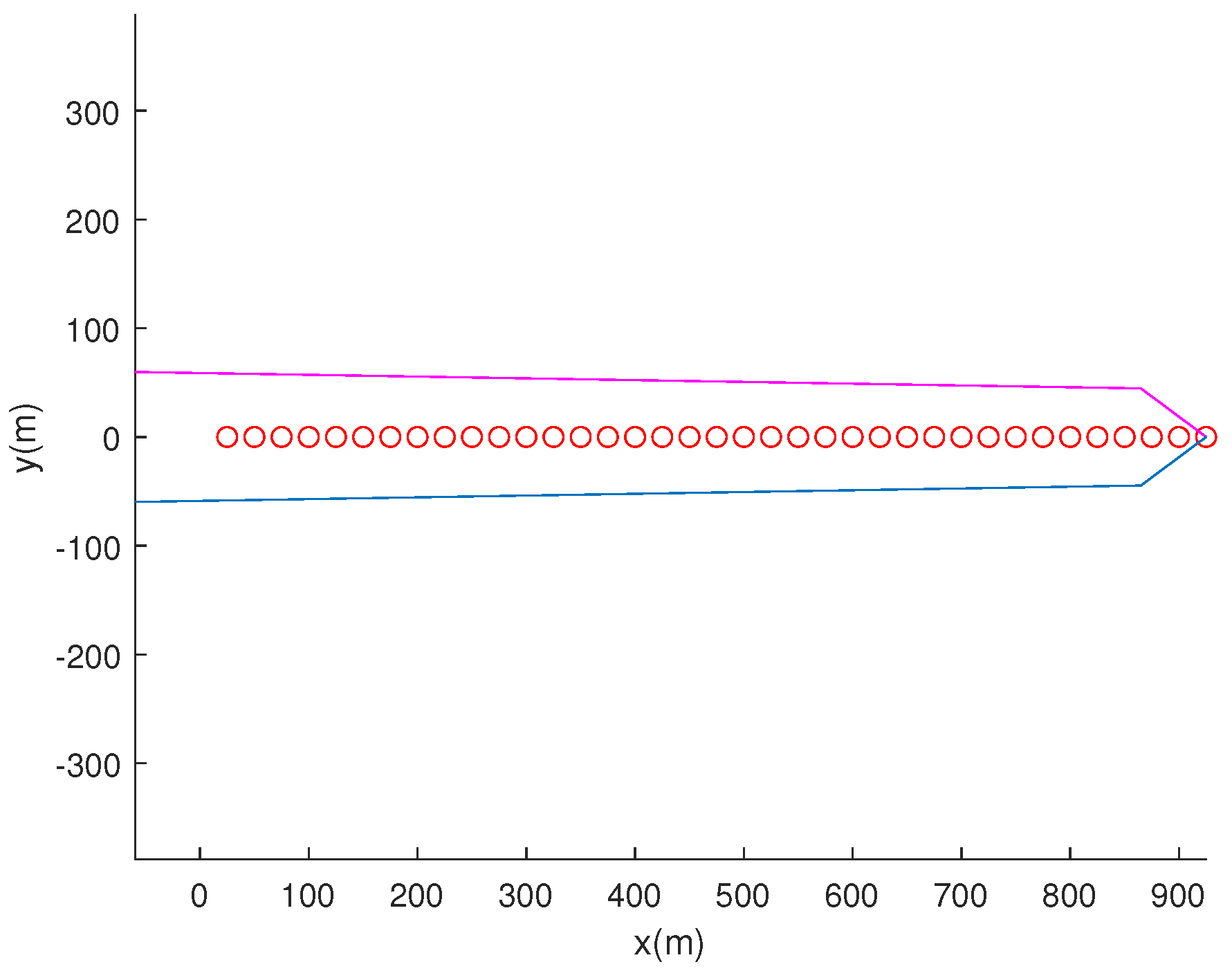
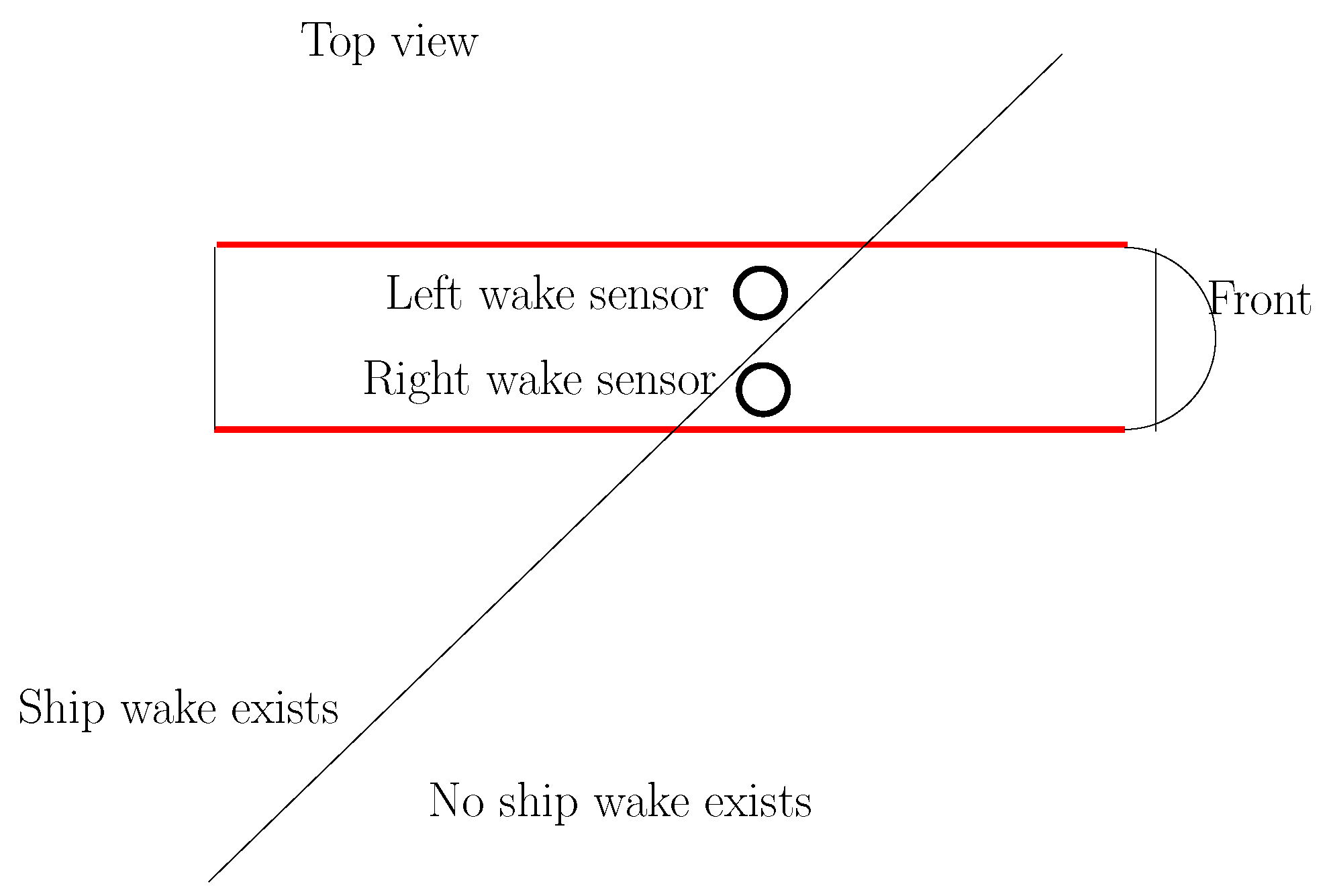

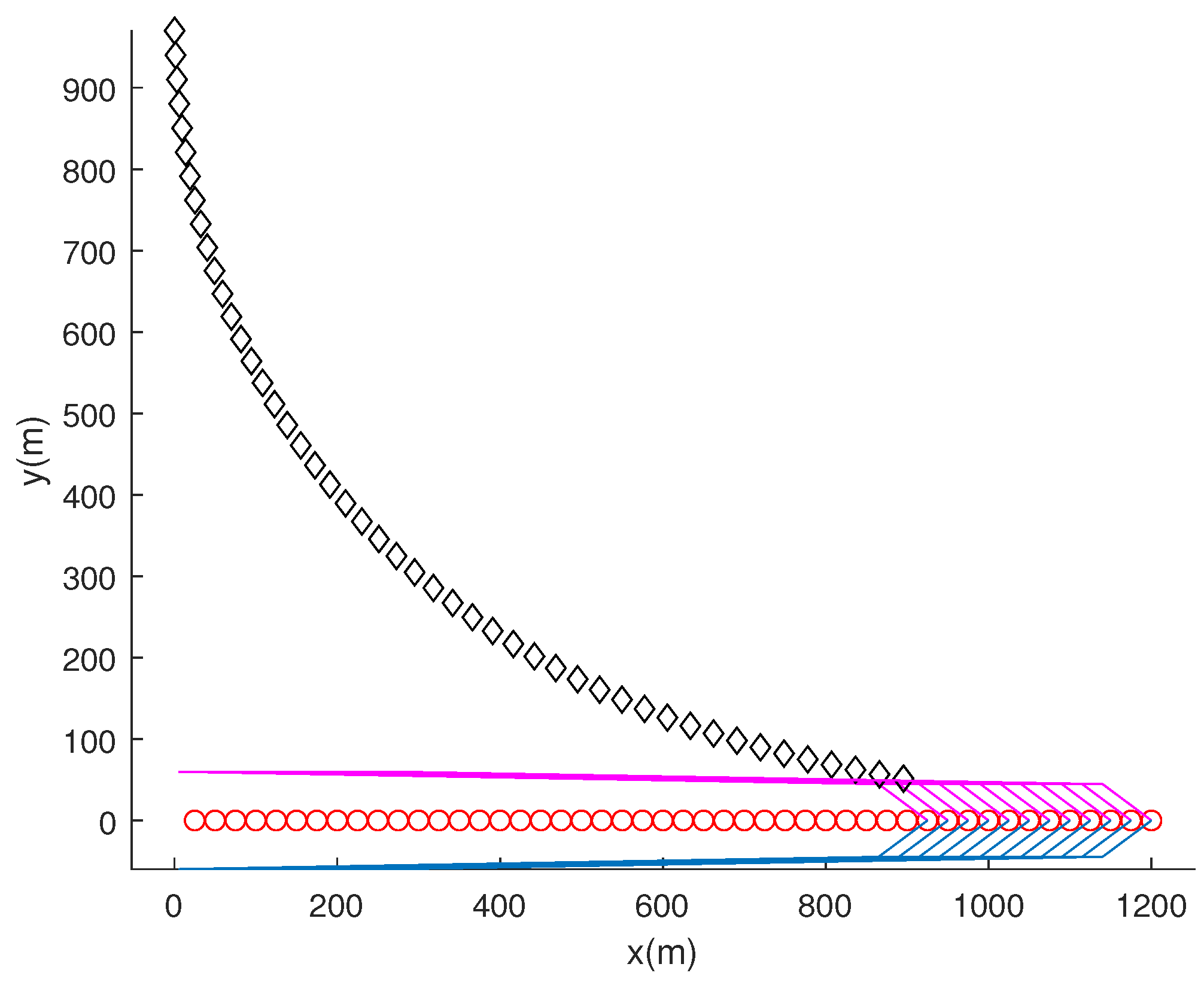
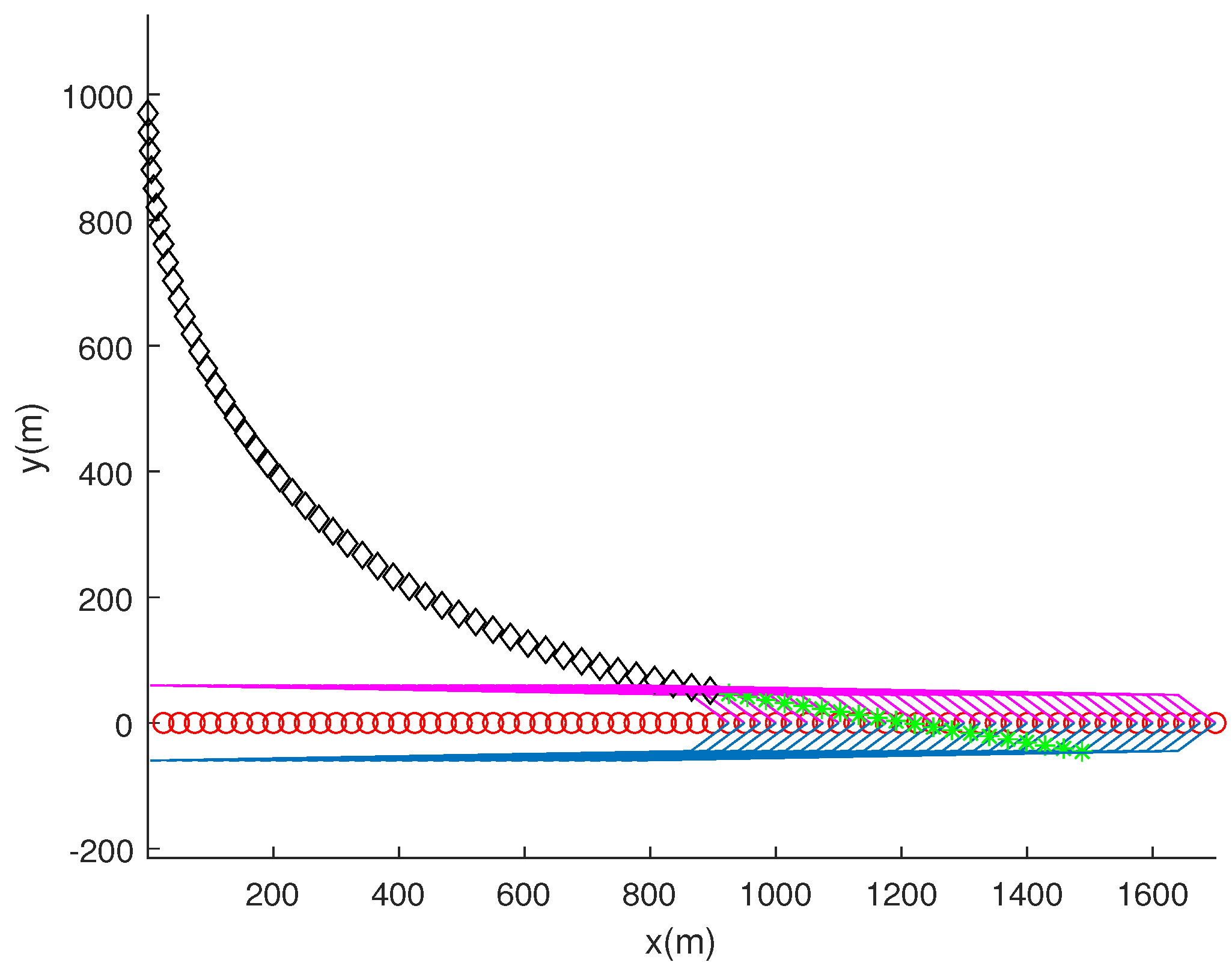
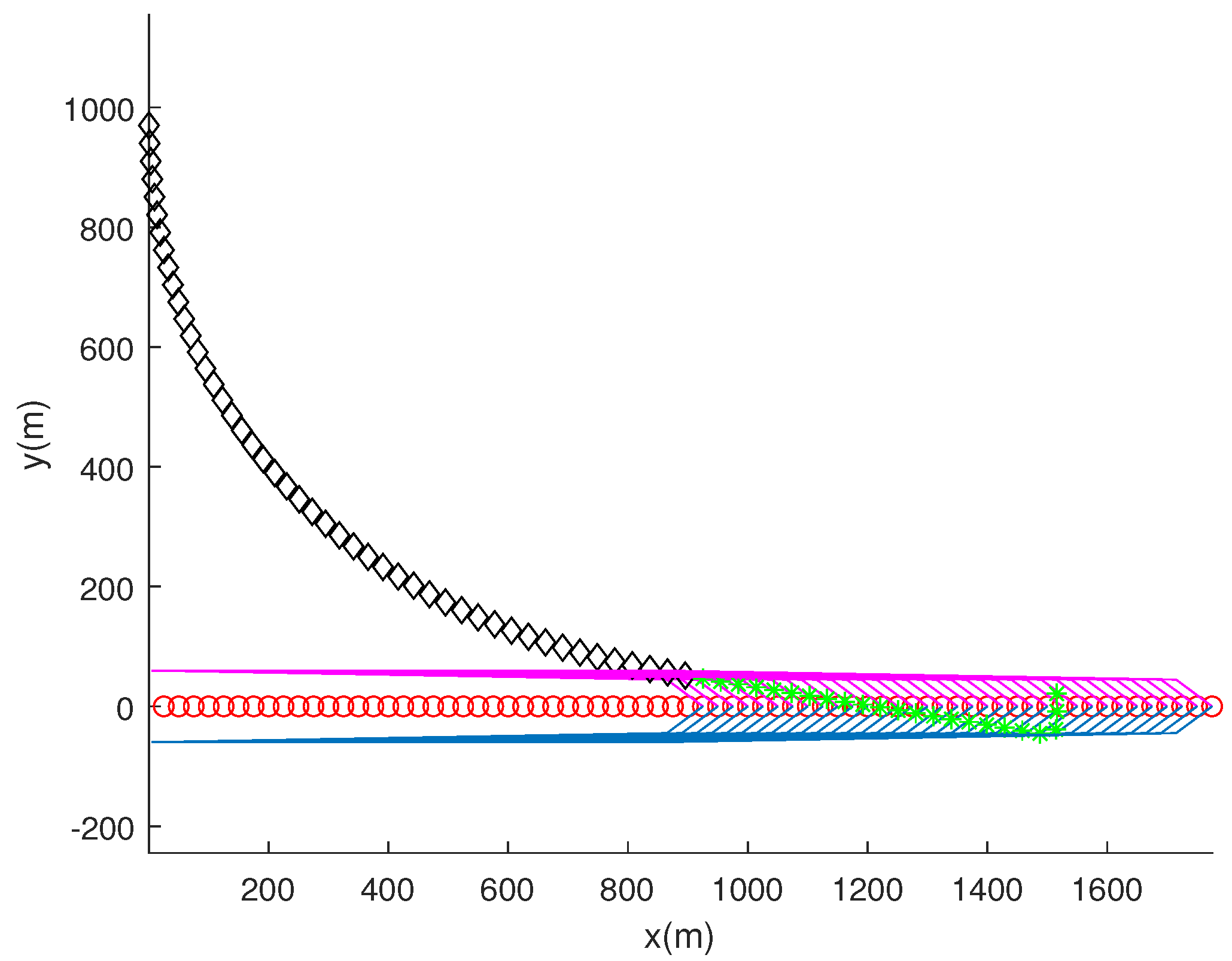
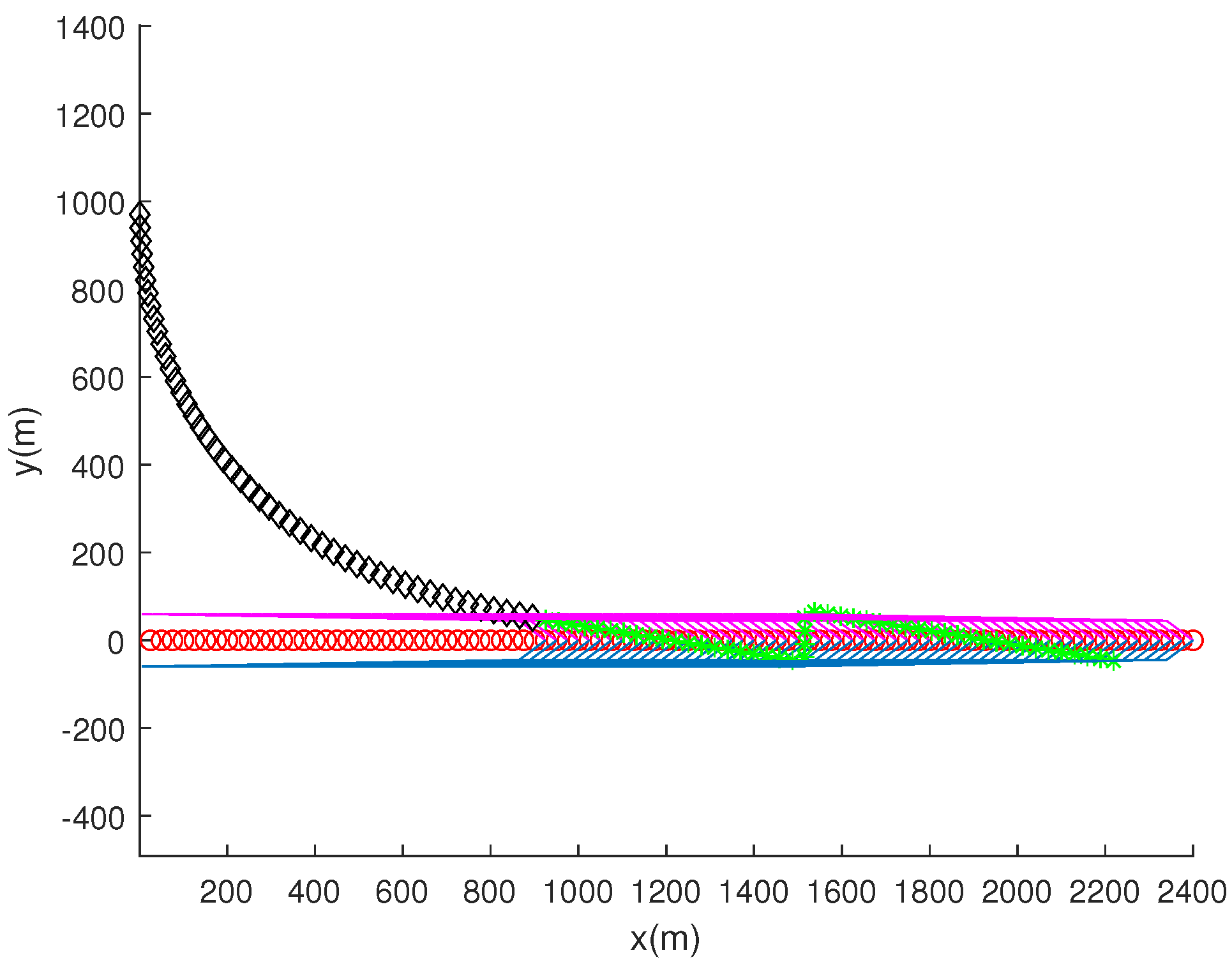
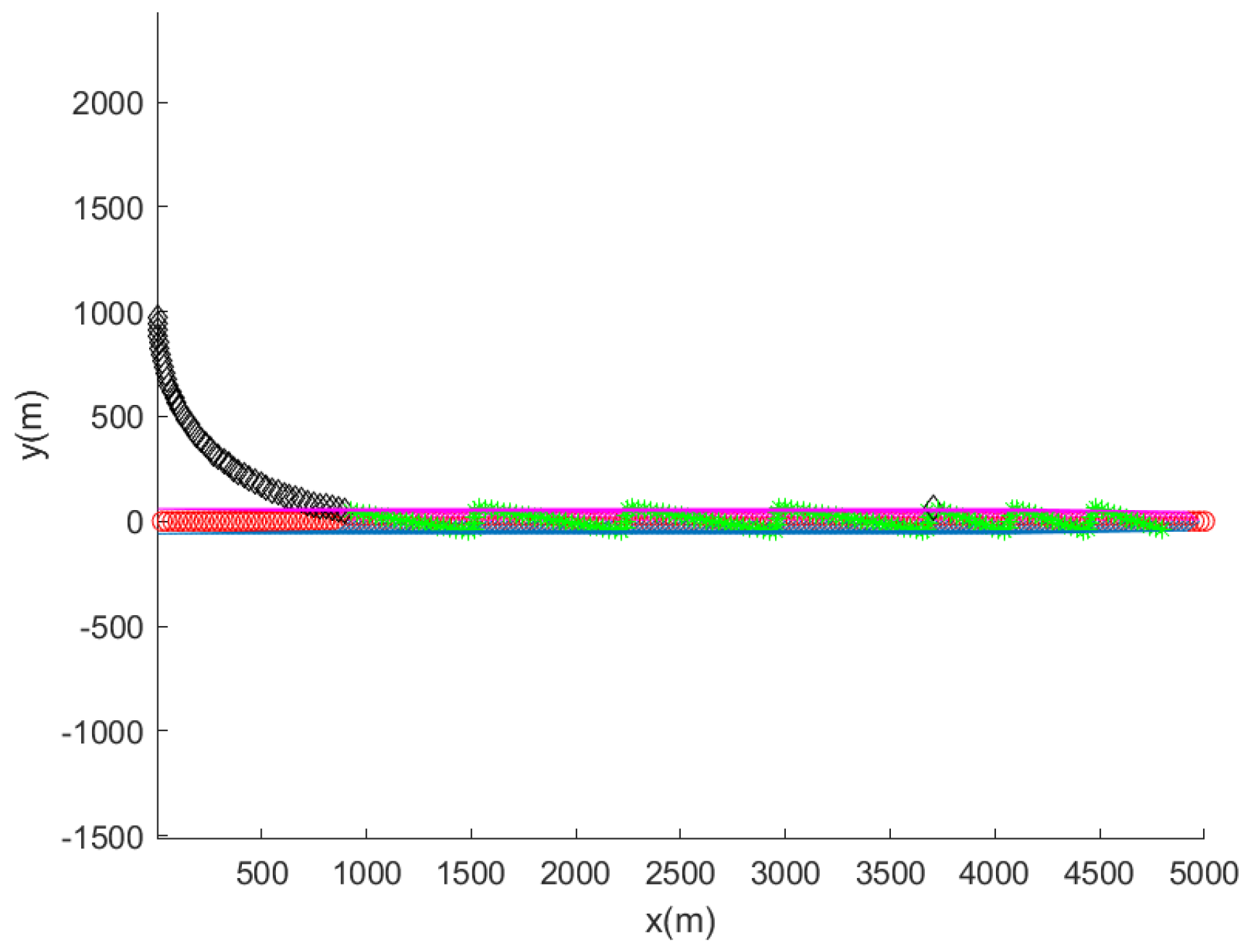
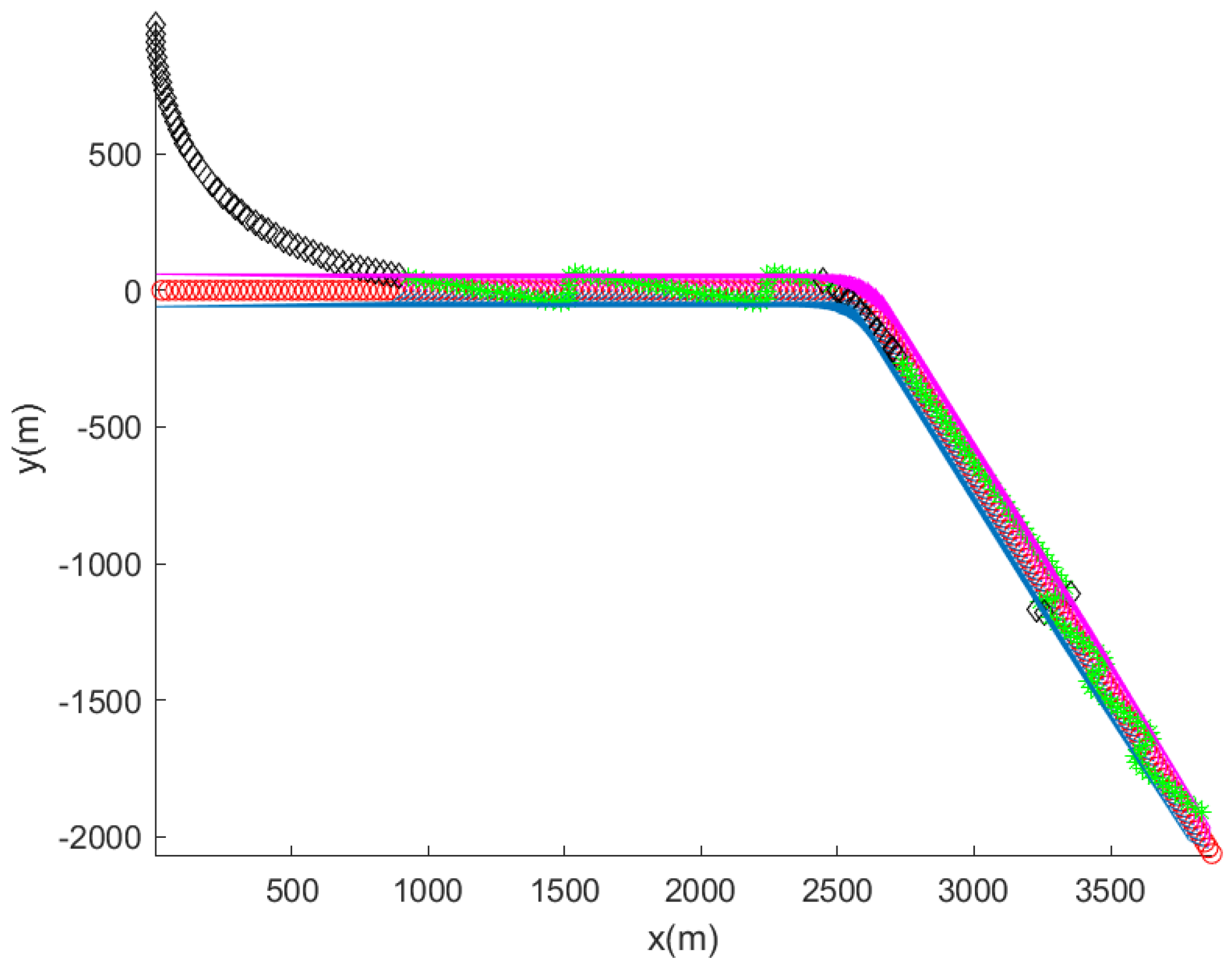

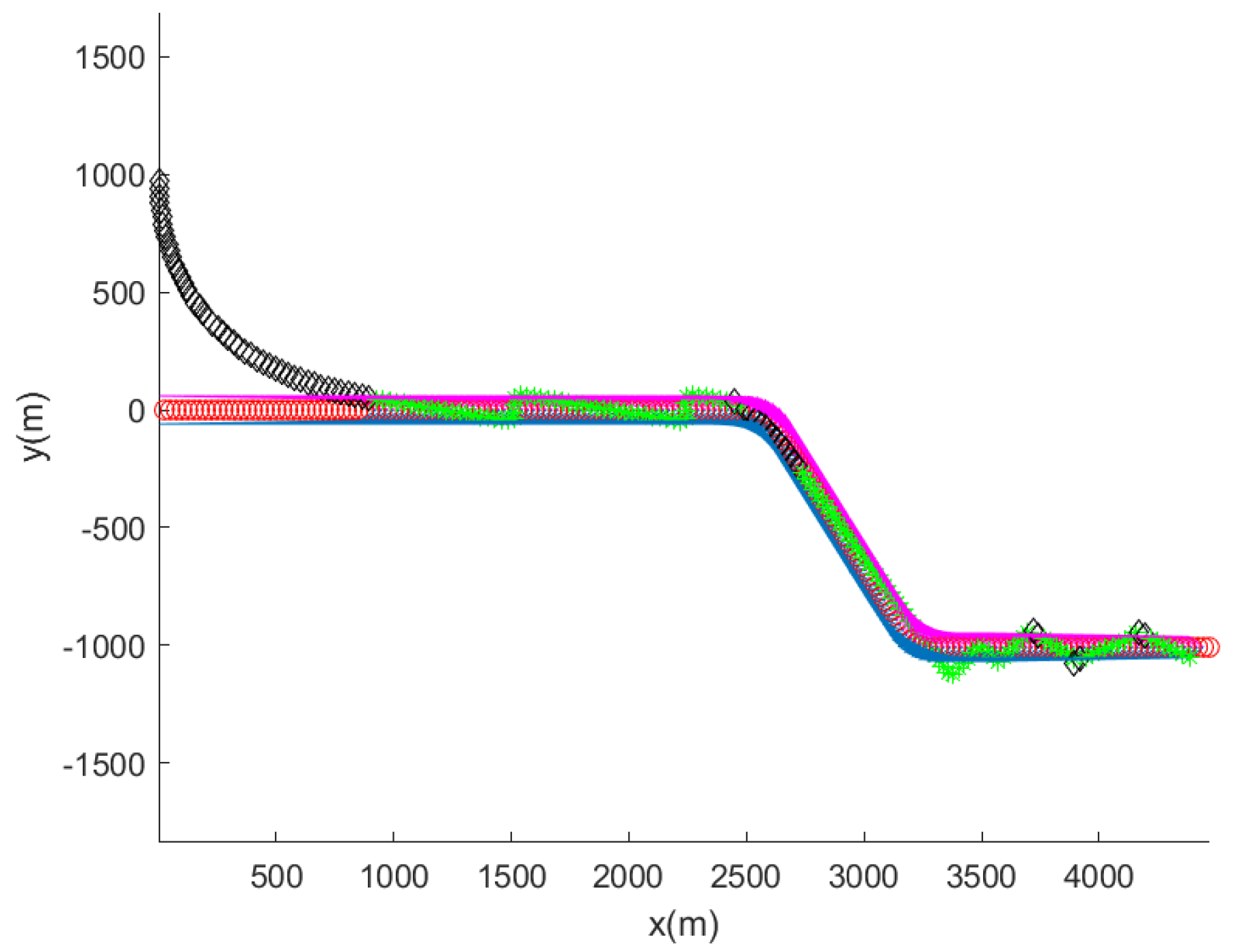
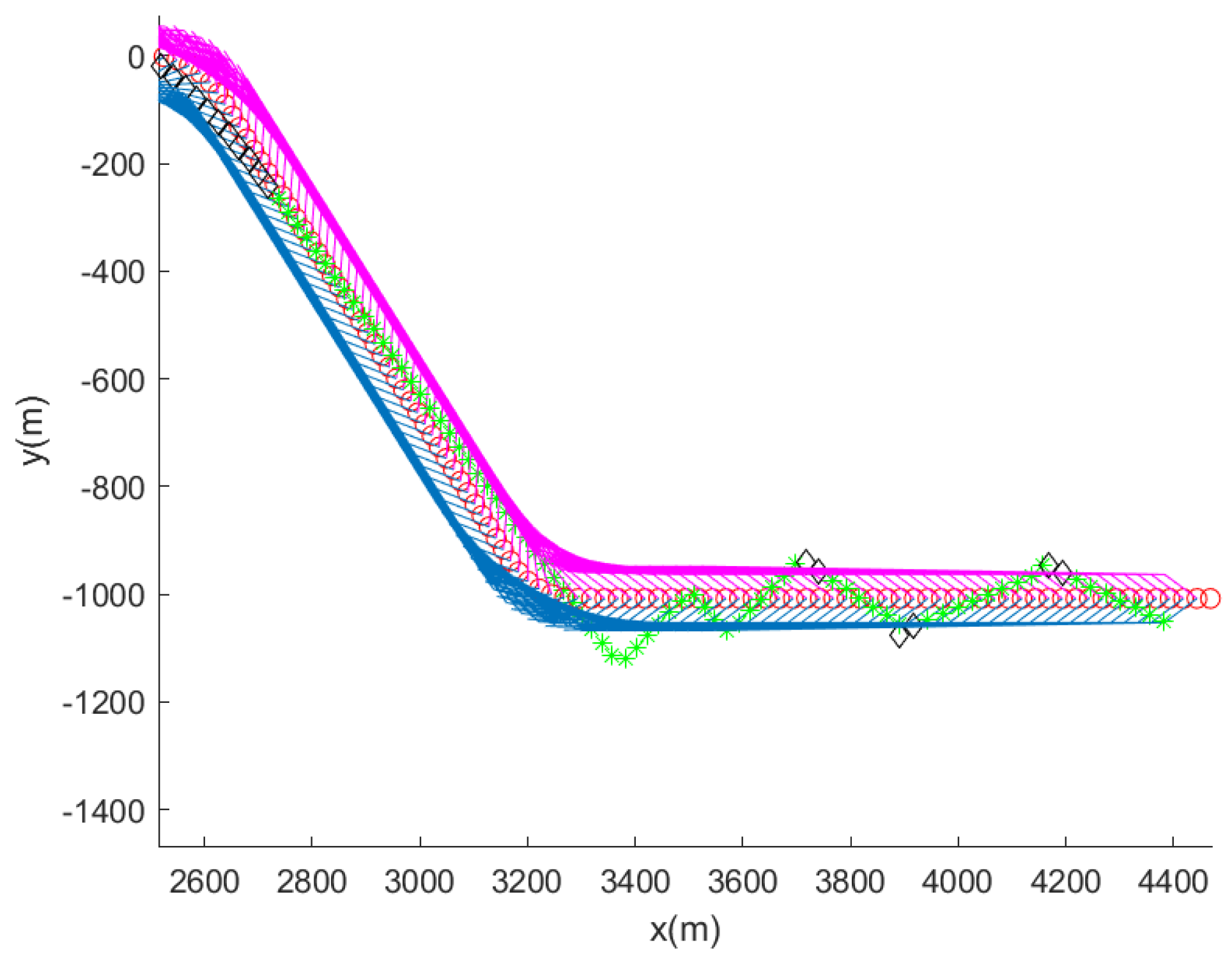


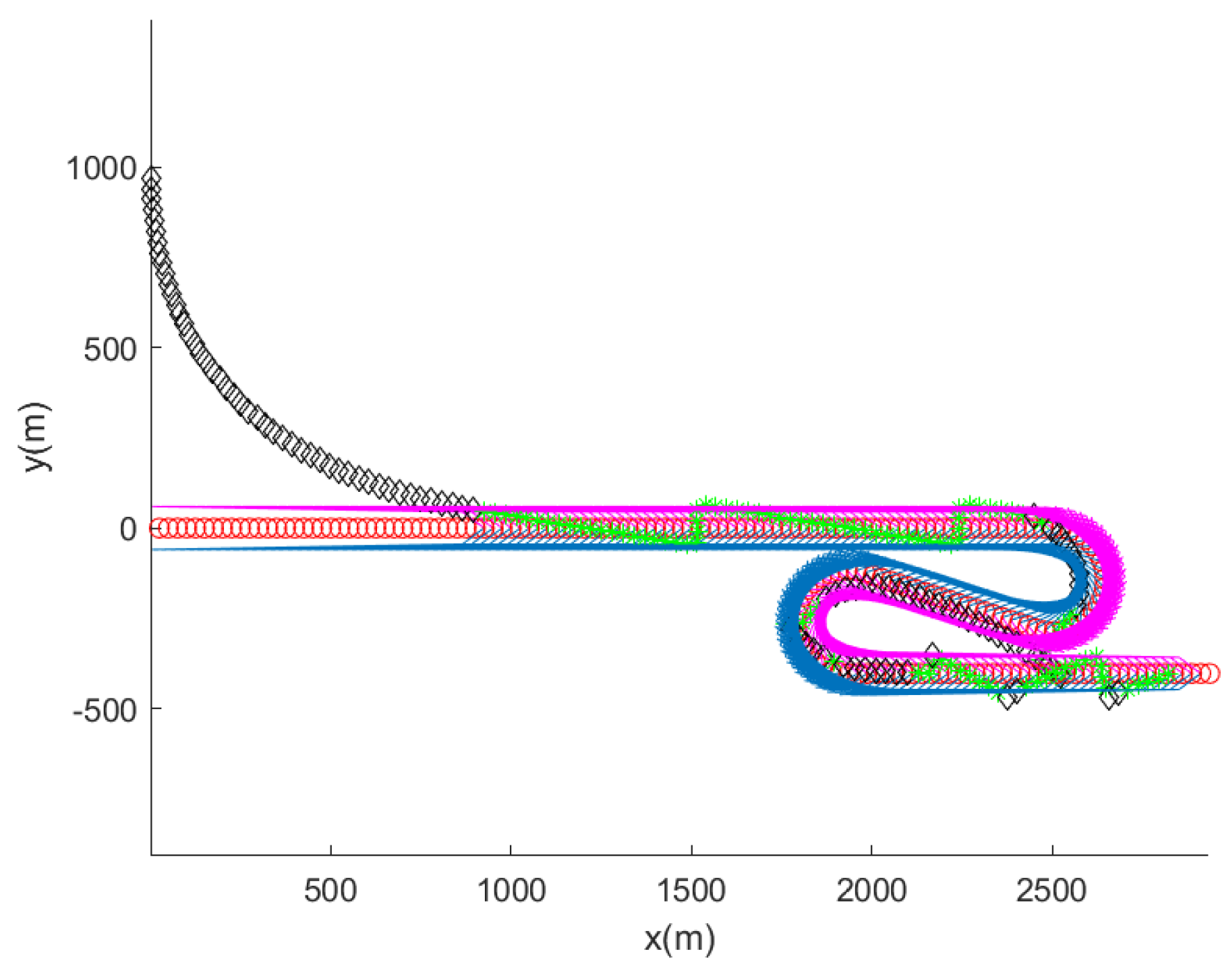
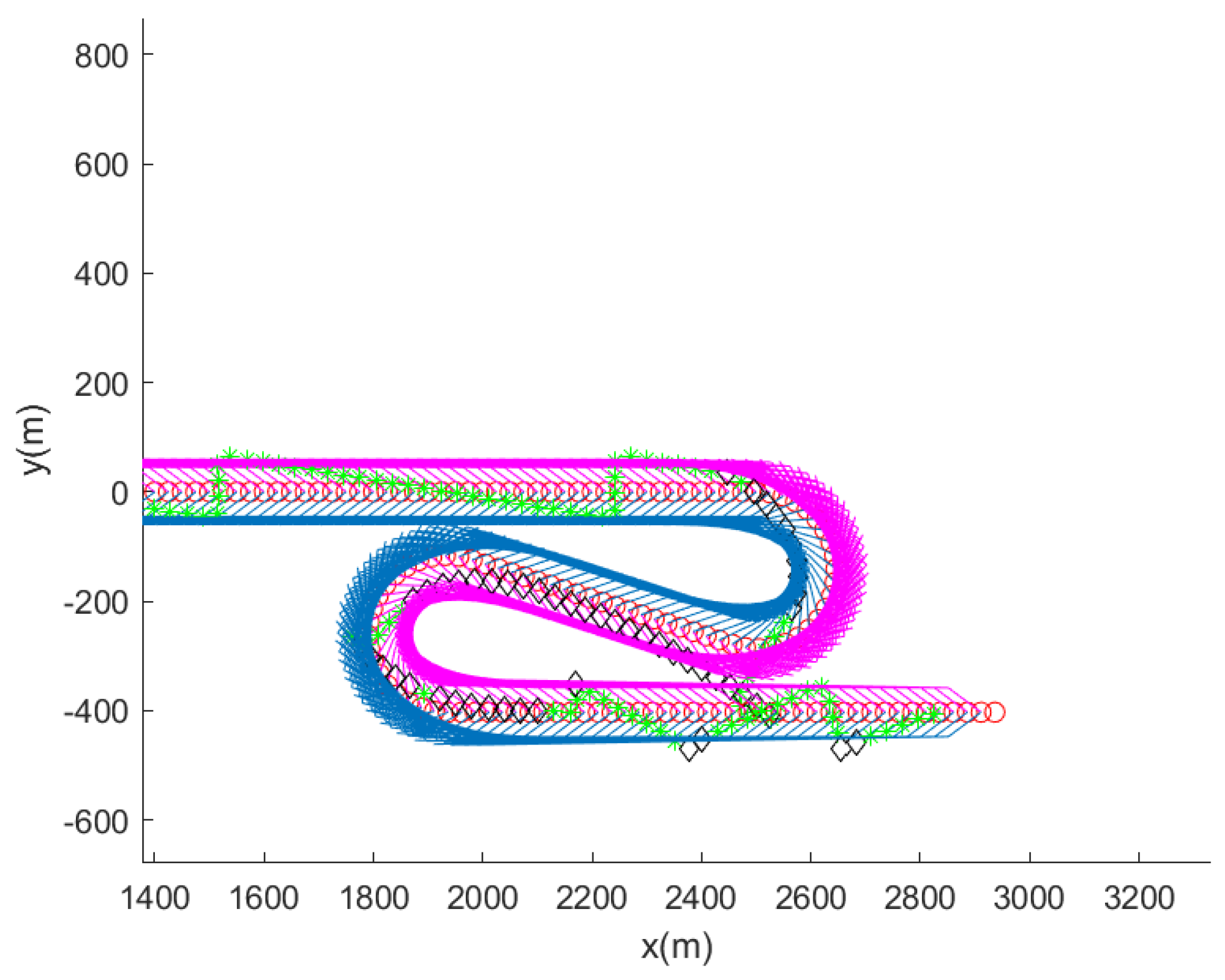
Disclaimer/Publisher’s Note: The statements, opinions and data contained in all publications are solely those of the individual author(s) and contributor(s) and not of MDPI and/or the editor(s). MDPI and/or the editor(s) disclaim responsibility for any injury to people or property resulting from any ideas, methods, instructions or products referred to in the content. |
© 2024 by the author. Licensee MDPI, Basel, Switzerland. This article is an open access article distributed under the terms and conditions of the Creative Commons Attribution (CC BY) license (https://creativecommons.org/licenses/by/4.0/).
Share and Cite
Kim, J. Wake-Responsive AUV Guidance Assisted by Passive Sonar Measurements. J. Mar. Sci. Eng. 2024, 12, 645. https://doi.org/10.3390/jmse12040645
Kim J. Wake-Responsive AUV Guidance Assisted by Passive Sonar Measurements. Journal of Marine Science and Engineering. 2024; 12(4):645. https://doi.org/10.3390/jmse12040645
Chicago/Turabian StyleKim, Jonghoek. 2024. "Wake-Responsive AUV Guidance Assisted by Passive Sonar Measurements" Journal of Marine Science and Engineering 12, no. 4: 645. https://doi.org/10.3390/jmse12040645
APA StyleKim, J. (2024). Wake-Responsive AUV Guidance Assisted by Passive Sonar Measurements. Journal of Marine Science and Engineering, 12(4), 645. https://doi.org/10.3390/jmse12040645





